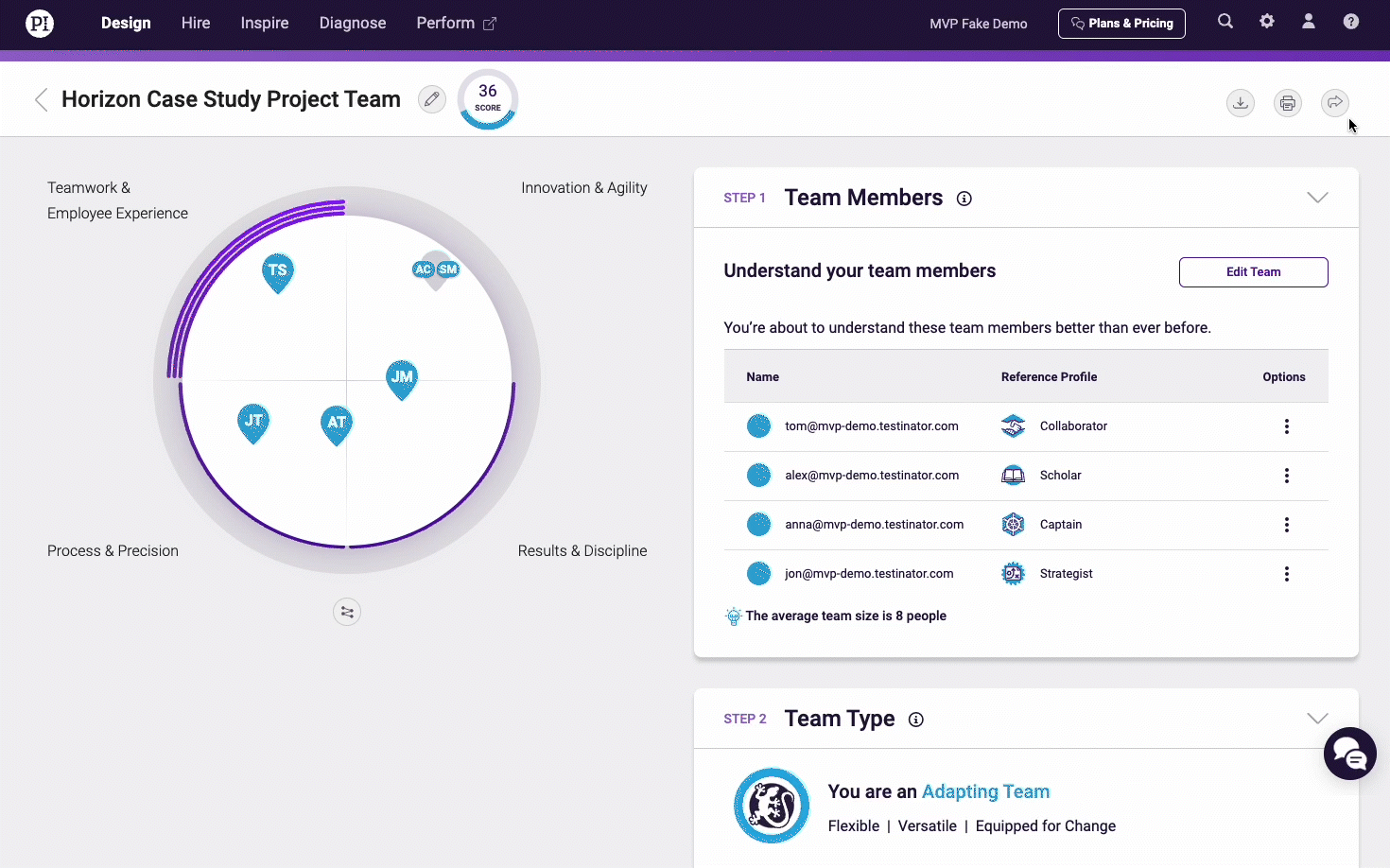An explanation of how PI’s Behavioral Assessment works
60+ years ago, Arnold Daniels created the first version of the Predictive Index Behavioral Assessment™ (BA). The design of the assessment was based on the works of William Marston and his book “Emotions of Normal People.” But Arnold’s workplace assessment tool also took inspiration from and followed the psychometric and psychological principles of influential psychologists such as Gordon Allport, Louis Thurstone, Raymond Cattell, and Carl Rogers, to name a few.
After several years of refining, Arnold’s workplace assessment was complete. He settled on an 86-item, free-choice, adjective checklist, which was specifically designed to measure four motivating needs, or “drives,” that had the biggest effect on workplace behaviors: dominance, extraversion, patience, and formality.
His position was this: If you know where a person falls on a spectrum of these four factors, you possess a great deal of knowledge about what it would be like to work with him or her.
Let’s take a look at those four key factors in detail.

The four drives that determine workplace behavior
1. Dominance
Dominance is the drive to exert influence on people or events. It’s also called the A drive.
An employee with a low amount of the dominance drive is collaborative, cooperative, and harmony-seeking. This person is accepting of company policies and generally happy to go along with others’ ideas. Low dominance employees prefer to be recognized as part of a team, and they tend to shy away from individual competition.
An employee with a high amount of the dominance drive is independent, assertive, and self-confident. This person enjoys being challenged, is comfortable with conflict, and likes autonomy in problem-solving. High dominance employees prefer individual recognition, and they can sometimes come across as authoritarian.
2. Extraversion
Extraversion is the drive for social interaction with other people. It’s also called the B drive.
An employee with a low amount of the extraversion drive takes time to trust others, values his or her privacy, and needs opportunities to reflect. This person likes to work with facts and is analytical and imaginative. Low extraversion employees prefer private recognition, and they can sometimes come across as matter-of-fact.
An employee with a high amount of the extraversion drive connects easily with others, craves social acceptance, and needs opportunities to influence others. This person is outgoing, convincing, animated, and enthusiastic. High extraversion employees prefer public recognition and like seeing visible signs of accomplishments.
3. Patience
Patience is the drive to have consistency and stability. It’s also called the C drive.
An employee with a low amount of the patience drive needs variety, freedom from repetition, and opportunities to handle multiple priorities. This person is comfortable with change, can juggle multiple priorities, and works at a faster-than-average pace. Low patience employees can sometimes be seen as intense, restless, impatient, or brisk.
An employee with a high amount of the patience drive craves a stable work environment and the ability to work at a steady pace. This person needs freedom from constantly changing priorities and is generally patient, calm, and peaceful. High patience employees tend to form long-term affiliations and like being recognized for their loyalty.
4. Formality
Formality is the drive to conform to rules and structure. It’s also called the D drive.
An employee with a low amount of the formality drive needs freedom from rigid structure as well as freedom from rules and controls. This person is tolerant of ambiguity, likes to be spontaneous, and would rather delegate the details to others. Low formality employees are flexible, informal, and adaptable.
An employee with a high amount of the formality drive needs clarity of expectations and time to gain expertise. This person sees him or herself as a subject matter expert and thus needs freedom from risk of error. High formality employees are meticulous, thorough, and disciplined, and prefer to be recognized for depth of knowledge.
Reading behavioral patterns to understand workplace behaviors
Everyone has some combination of all four key factors. When a person takes the PI Behavioral Assessment, their results are translated into a behavioral pattern that centers around a midpoint and has three sigmas on either side.
If a factor falls to the left of the midpoint, the person has a low amount of that factor. If a factor falls to the right of the midpoint, the person has a high amount of that factor.
In the pattern below, the individual has high dominance (A), high extraversion (B), low patience (C), and low formality (D).

The further a factor is from the midpoint, the stronger those workplace behaviors will present. Think of it as turning up the volume button on a stereo. A person with a dominance drive that’s one sigma high would be moderately assertive whereas a person with a dominance drive that’s three sigmas high would be extremely assertive. While the first person might come across as independent, determined, and autonomous, the second person might seem to be aggressive, authoritarian, and challenging.
Factor combinations—or the way that certain drives interplay—are extremely important. The wider the spread between the two factors, the stronger the behavior will present. Looking at the above pattern you can see that there are three sigmas separating A and D (this is a pretty wide spread). Factor combination “A over D” tells you how comfortable someone is with taking risks. If the person’s A (dominance) factor is higher than his or her D (formality) factor, that person is comfortable with risk. On the other hand, if the candidate’s D is higher than his or her A, that person is cautious with risk.
Why understanding workplace behaviors is critical to your success
Understanding factor combinations can help you pinpoint candidates who are likely to be a good fit for an open role. For example, if you need to hire a sales BDR, you’d look for candidates with A over D because salespeople must be comfortable with risk.
One of the four forces that disrupt employee engagement and productivity is poor job fit. Poor job fit happens when people are placed in roles they aren’t naturally wired to do. But if you take the time to understand what makes a candidate tick—and what type of workplace environment and role they’d be most successful in—you can reduce bad hires and turnover.
Another reason why good employees quit is poor manager fit. Poor manager fit happens when managers don’t have the tools they need to manage employees in a way that pushes them to the top of their game. But when you give managers access to behavioral tools they can use those data insights to tailor their management style to each individual direct report.
Want to learn more about the four key factors that determine workplace behavior and how you can use people data to boost your business? Request a demo and experience the power of PI for yourself.
Request a Demo
9,000+ companies trust The Predictive Index to create dream teams.
See how PI’s Talent Optimization Platform can help your company hire with certainty, inspire your teams, and sustain lasting employee engagement.








